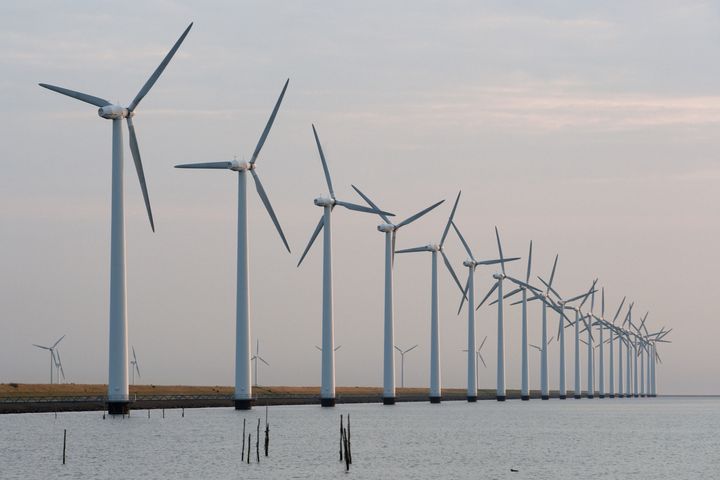
Amid the clamor of an election campaign season, the reality of America's improving energy situation has been largely obscured. The truth is that the United States is making strides toward a cleaner, more secure energy sector, thereby enhancing our national prosperity.
We now import only 45 percent of the oil we consume, from a 2005 high of more than 60 percent. We have become self-sufficient with respect to natural gas, even as usage expands. Clean, renewable energy production has doubled in the last four years, helping to diversify our national energy mix. And according to the U.S. Energy Information Agency, energy-related carbon emissions in this country will decline three percent in 2012, after falling two percent in 2011.
In short, with production up and emissions down, our energy system is getting more diverse, efficient, balanced and clean. But more can be done to continue these promising trends.
With the election behind us, Congress and the administration have an opportunity to build on recent progress for the benefit of the American people. Among the many possible priorities, three stand out.
First and foremost, Congress can forge consensus and adopt a farsighted clean energy standard (CES) to guide progress in the utility sector through 2030. A comprehensive CES would signal a clear long-term objective for the power sector--clean, secure and affordable electricity. This performance-based approach would offer opportunities for a range of energy technologies and interests and therefore should be able to attract broad political support. Properly structured with distinct targets for renewable energy sources, a CES could provide the demand signal that industry, investors and innovators all agree is needed. It is the single most important step that could be taken to stimulate the clean energy industry in the United States.
Second, there is broad bipartisan agreement about the value of federal investment in basic and applied energy research. The energy industry invests in research and development (R&D) at a far lower rate than other high-technology industries--in part because it is expensive, but also because of the necessities of global competition. Federal R&D has a record of success, leading to such innovations as the horizontal drilling and hydraulic fracturing used in oil and gas production, to renewable energy and energy-efficiency breakthroughs. But U.S. leadership in energy innovation is challenged as never before by international competition. Moreover, numerous industry and academic studies have found that the United States is significantly underinvesting in energy innovation: Most studies recommend tripling the federal energy R&D budget. This should be a bipartisan priority in upcoming budgets so that the United States maintains its edge in innovation.
Industrial energy efficiency is a third opportunity for bipartisan cooperation in the next Congress. Industry consumes 30 percent of the power used in the United States. Combined heat and power (CHP) and other industrial efficiency technologies can help U.S. industry reduce power needs, save money, become more competitive and create jobs.
In recent years, leaders from both parties have put forward proposals for increasing industrial energy efficiency. There is a broad coalition of manufacturers, end users and developers eager to support initiatives that will help industry harness energy-efficiency opportunities.
President Obama recently set a basic goal of increasing CHP by 40 gigawatts by 2020. In 2013, the executive branch and Congress should work together on measures to achieve and exceed this goal.
There are any number of energy supply-and-demand options that could be pursued in the coming months. One of the clear takeaways from this year's elections is that Americans want the political parties and government to work together in service of a more peaceful, prosperous future.
